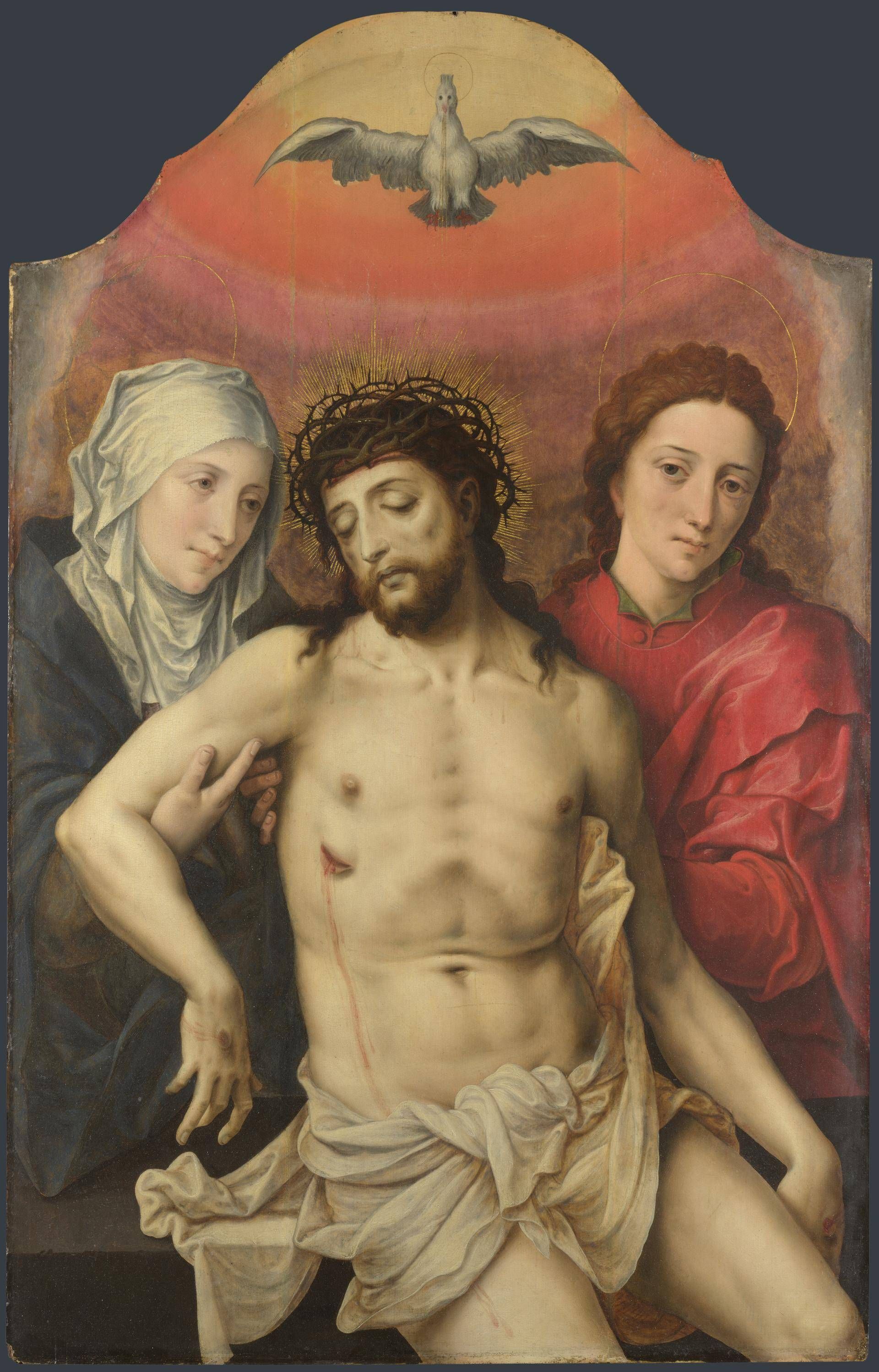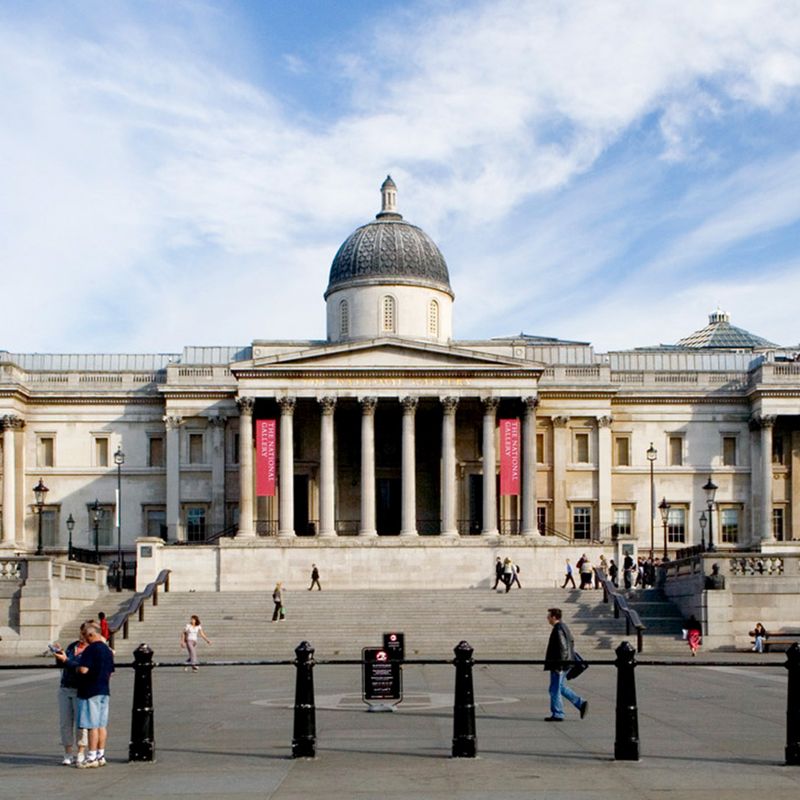
The Virgin Mary and Saint John the Evangelist support the body of the dead Christ. He rests on a stone slab, its long narrow shape suggesting that it is the one on which he was anointed and embalmed before being carried to his tomb.
The painting has affinities with the works of Giovanni Bellini, such as The Dead Christ supported by Angels, but we now know it is based on a plaquette by Moderno, the pseudonym of a goldsmith and medallist active in north Italy at the turn of the sixteenth century, datable to around 1508-13. The artist may not have had direct knowledge of Moderno's composition; it seems that one of his plaquettes reached the Low Countries and attracted the attention of Jan Sanders van Hemessen, who painted an enlarged version of it, perhaps in around 1530 or 1540 (Museum Henri Boez, Maubeuge).
This variation on van Hemessen's picture by the Master of the Prodigal Son became extremely popular and was reproduced in many painted versions, perhaps over a long period, and in an engraving. The reason for its popularity is unclear, but it's possible that the plaquette, or one of the versions, was believed to have worked a miracle.
Credit: Bought, 1854
c. 1550
Oil on wood
108.5 x 69.0 cm
NG266
Image and text © The National Gallery, London, 2025
Where you'll find this

National Gallery
Permanent collection


